Inventory Management | JIT Inventory | Periodic and Perpetual Inventory System
 Arjun EP
Arjun EP


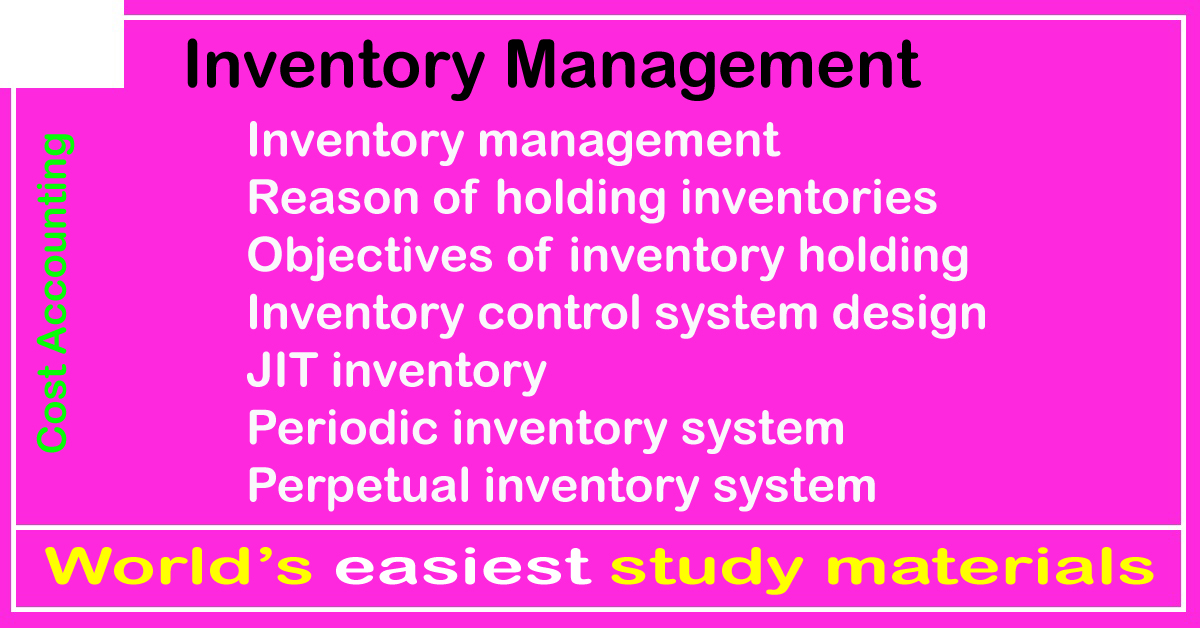
Concept of Inventory Management | Stock Management
Inventories (stocks, merchandise) are the part of current assets.
Generally, it is applied or calculated for one year.
There are two types of inventories; they are merchandise and manufacturing.
|
Merchandise Inventory |
Manufacturing Inventory |
|
Beginning inventory |
Raw Material (cotton, jute, leather, woods etc) |
|
Ending inventory |
Work in progress |
|
|
Finished goods |
Raw Materials
Raw materials are the primary physical inventory for manufacturing company.
Without raw materials, products cannot be produced; some raw materials are:
|
Cotton |
for yarn and thread industry |
|
Jute |
for carpet and mattress industry |
|
Leather |
for shoes and leather garments industry |
|
Woods |
for furniture industry |
|
Paper |
for copy industry and publication |
|
Yarn/thread |
for textile industry |
|
Plastic/rubber |
for plastic and rubber industry |
|
Wheat and paddy |
for flour and rice mill etc |
Keep in Mind (KIM)
|
Finished goods of one industry maybe raw materials of other industry. |
|
Inventory, stock and merchandise are same. Inventory and merchandise are American word; stock British word. |
Work in Progress (WIP)
When other materials are added in raw materials and labour do something with raw materials, it is called work in progress.
WIP increases the value of raw materials.
But volume of raw materials may be increase or decrease.
Work in progress = raw materials + direct materials + indirect materials + wages
Finished Goods
Finished goods are near about ready to sales.
In other words, finished goods or stock mean complete the manufacturing process and ready to sales to customers in trading concern.
Unsold goods for accounting period are known as finished closing goods.
It becomes opening finished goods for new accounting period.
Reason of Holding Inventories | Motive of Holding Inventories
The main reason of inventories holding is to production or sales of goods without hindrance or interruption.
Other reasons or motives are given below:
Transaction motives
For continuous process or production, sufficient quantities of materials are needed.
Lack of raw materials, production may be stopped.
Lack of finished goods, supplies may be interrupted.
Lack of consumable goods, other work may be late.
Precautionary motives
There are natural and man-made hindrances in production of goods.
To be safe from these activities, precaution is necessary.
Natural hindrance: weather like earthquake, too rain fall, cold or hot etc.
Manmade hindrance: strike, shut down, lock-out, transport stopping (chakka jaam), price increase etc.
These activities may affect demand and supply.
Therefore, addition quantity should be maintained to avoid loss due to above activities.
Speculative motives
Costs of raw materials are depended on demand and supply.
Although it is risky yet no risk no gain.
To take advantage from it, the following activities can be done:
Raw materials should be purchased at season.
Raw materials should be purchased in large quantity.
If there is chance to price fall in few days, small quantity should be purchased.
#######
|
Click on link for YouTube videos topic wise : |
|
|
Accounting Equation |
|
|
Basic Journal Entries in Nepali |
|
|
Basic Journal Entries |
|
|
Journal Entry and Ledger |
|
|
Ledger Account |
|
|
Subsidiary Book |
|
|
Cash Book |
|
|
Trial Balance and Adjusted Trial Balance |
|
|
Bank Reconciliation Statement (BRS) |
|
|
Depreciation |
|
|
Click on link for YouTube videos chapter wise: |
|
|
Financial Accounting and Analysis (All videos) |
|
|
Accounting Process |
|
|
Accounting for Long Lived Assets |
|
|
Analysis of Financial Statement |
|
#####
Objectives of Inventory Holding
There is lot of objectives of inventory holding; out of them, some are:
Smoothly available of materials
The main objective of inventory holding is to supply raw materials for production without hindrance.
If there is not sufficient raw materials for production, machine and manpower will be idle.
No excess investment in materials
Small quantity in raw materials may stop production.
Large quantity of raw materials needs more investment in inventory.
Therefore, raw materials should be in economic order quantity (EOQ).
Reasonable price
While purchasing raw materials that should be purchased at reasonable price.
If possible materials should be purchased at low price.
But quality should not be ignored for low price.
Quality of product depended on raw materials.
Minimum wastage
While storage materials at godown as well as using in factory, there should be less wastage of materials.
Wastage should be allowed upto certain level known as normal level.
Information about availability of materials
To record information about materials is the duty of storekeeper.
He/she must provide information to materials/production management about availability of materials.
Storekeeper must keep record of materials up-to-date.
Minimize storage cost
To minimize storage cost of materials, reorder level (ROL).
Economic order quantity (EOQ) can be applied.
Misappropriate of materials
It may be possible to steal or misappropriate of materials by employees.
To prevent this, internal checking is must.
Payment of materials should pay only after checking order quantity and received quantity of materials.
Click on the photo for FREE eBooks
Inventory Control System Design
The main purpose of inventory or stock control is to control cost of production, obsolete of stock, reduce cost of receiving and storage of stock etc.
The following points should be considered:
a. Inventory should be purchased only after proper authority.
b. Quality of materials should be checked before purchasing.
c. Inventory should be purchased on EOQ basis.
d. Inventory should be issued or used only after authority.
e. Balance of inventory should be in proper record as last in first out (LIFO), first in first out (FIFO).
Just In Time Inventory | JIT Inventory
Just in time (JIT) system was developed in 1950 to 1960 by Toyota Motors, Japan.
In 1970, other Japanese companies adopted this system.
Later in 1980, United Kingdom (UK) adopted this system.
Nowadays, most of developed and developing countries are using this system where communication and transportation system are developed.
Under this system, inventories are maintained as low as possible.
Sometime it may be zero level. It means inventory are purchased at using time.
It is only possible when supplier is reliable/trusted and confident to supply on time.
There is no time to check the quality of goods so best quality goods are purchased in JIT.
Advantage of JIT Inventory
The main advantages of JIT are following:
· Just in time inventory system reduces expenses of holding/carrying cost of materials.
· It does not need maintaining large quantity of materials as stock.
· It helps to minimize wastage.
· It helps to deliver quality goods to customers
· It helps to improve efficient of labour.
· It helps to eliminate the materials price variances.
Limitation of JIT Inventory
The major limitations of JIT are following:
· The suppliers must be trusted and honest.
· There must be 100% guarantees to supply goods within time.
· There should be strict legal rules for compensation if supplier failed to supply.
Click on the photo for FREE eBooks

BBS Second year eBooks | Business Communication | Cost and Management Accounting | Organizational Behavior | Human Resource Management | Fundamentals of Financial Management
Inventory Systems | Periodic Inventory System | Perpetual Inventory System
Inventory (stock or merchandise) is one of the most important current assets of doing business.
For manufacturing company, there are three types of inventories; raw materials, work in progress and finished goods.
For repackaging or assembled company, there are two types of inventories; they are parts or semi-finished inventories.
For trading company, there in only one inventory i.e. finished goods.
Every business organization needs sufficient inventory for smooth running on its activities.
It serves as link between production and distribution processes.
Merchandising companies determine the quantity of inventory items by a physical count.
In a literal sense, inventory refers to stocks of anything necessary to do business.
(A) Periodic Inventory System
Under a periodic inventory system, the quantity of inventory in hand is determined only periodically.
In this system, the physical inventory count is taken once a year at the end of accounting period.
However, most companies prepare of quarterly financial data; therefore, they need more current information regarding their inventory levels to protect against shortage or over purchasing.
As a result, many companies choose a modified perpetual inventory system.
In modified system, increases or decreases in quantities are kept in units NOT in amount ($/₹/Rs etc).
Modified perpetual inventory system is just a memorandum of the double entry system which helps in determining the level of inventory at any point in time.
What method of a company uses to maintain inventory record system, it takes a physical inventory once a year.
No matter what type of inventory records are used or how well organized maintains inventory system, the danger of loss and error is always present.
There is chance to waste, breakage, theft, improper entry, failure to prepare or record requisitions etc.
Advantages of periodic inventory system
Some important advantages of periodical inventory are:
This system saves much time and labour costs.
It does not need to continuous records.
Generally, it is simpler system to administer as compared with the perpetual inventory system.
Disadvantages of periodic system
Some important disadvantages of periodical inventory are:
Inventory units are counted only once at the end of accounting period, it takes more time.
Inventory value is determined at the end of accounting period; so there is very little control over inventory movements.
The value of inventory lost, stolen or spoiled is difficult to ascertain; this may significantly affect profits and net worth.
(B) Perpetual Inventory System
Perpetual inventory means continuous checking and supply of the inventory.
This continuous checking is done with the help of store ledger and storekeeper.
It helps to regular supply of materials to production department.
It is possible that the balance of stock shown by bin card may be differ from actual balance.
This different may be due to avoidable and unavoidable causes.
Definition of perpetual inventory system
According to H G Wheldon, “Perpetual inventory system is a system of records maintain by the controlling department, which reflect the physical movement of stock and their current balance.”
Avoidable causes
Clerical mistake like wrong posting and non-posting.
Pilferage and theft of inventory.
Carelessness in inventory handing.
Short or over issue of materials.
Unavoidable causes
Actual balance of inventory may be less due to shrinkage and evaporation.
Actual balance of inventory may be more due to moisture or counting mistake.
Actual balance of inventory may be less due to loss by fire.
Advantage of perpetual inventory
Some important advantages of perpetual inventory are:
It helps to prepare periodical statement without taking physical inventory.
It helps to records accurate inventory up-to-date.
It helps to find out error of recording and shortage of materials.
It helps to control excess capital investment on inventory.
It helps to maintain a system of internal checking in inventory.
It helps to find out closing inventory to prepare final account.
Disadvantage of perpetual inventory
The main disadvantages of perpetual inventory are:
This is very expensive system.
This is not suitable for small organization.
It represents only figure not actual inventory value.
Difference between Perpetual and Periodic Inventory
|
Bases |
Perpetual Inventory System |
Periodic Inventory System |
|
Use of account |
Inventory account is used to record it. |
Purchase account is used to record it. |
|
Basis |
Book records |
Physical verification |
|
Updating |
Continuously |
At the end of the accounting period. |
|
Information |
Inventory and cost of sales. |
Inventory and cost of goods sold. |
|
Balancing figure |
Inventory |
Cost of goods sold |
|
Possibility |
Yes, possible to control. |
No, control is not possible. |
|
influence |
This method does not influence the business operation. |
During valuation, the business operations need to be stopped. |
|
Reporting |
It is given in inside the trial balance. |
It is given in outside of trial balance viz in additional information. |
Which inventory valuation method is best, periodic or perpetual inventory system?
There are advantages and disadvantages of both FIFO and LIFO method.
Choosing the right inventory valuation method is important because it has a direct impact on the business’s profit margin.
Choosing the method lead to drastic differences in the cost of goods sold, net income and ending inventory.
Apply for loan
If firm is going to take loan by keeping stock as collateral, in such a condition value of stock should be high.
Higher valuation gives high assurance to lender.
If prices are increasing throughout the year, FIFO gives higher value for closing inventory.
If prices are decreasing throughout the year, LIFO gives higher value for closing inventory.
Attracting investors
High profit margin gives a lot of attention to investors and shareholders.
If firm is looking for new funding opportunity and want to please shareholders, they must be attracted.
If prices are increasing due to inflation, FIFO valuation will be beneficial.
If prices are decreasing due to deflation, LIFO valuation will be beneficial.
Saving taxes
If firm wants to cut down its tax liabilities, LIFO valuation will save some money under inflation situation.
LIFO shows less profit than FIFO.
Fewer profits means less tax, more saving
***** #EPOnlineStudy *****
Thank you for investing your time.
Please comment on article.
You can help me by sharing this article at your social media platform.
Jay Google, Jay YouTube, Jay Social Media
जय गूगल, जय युट्युब, जय सोशल मिडिया


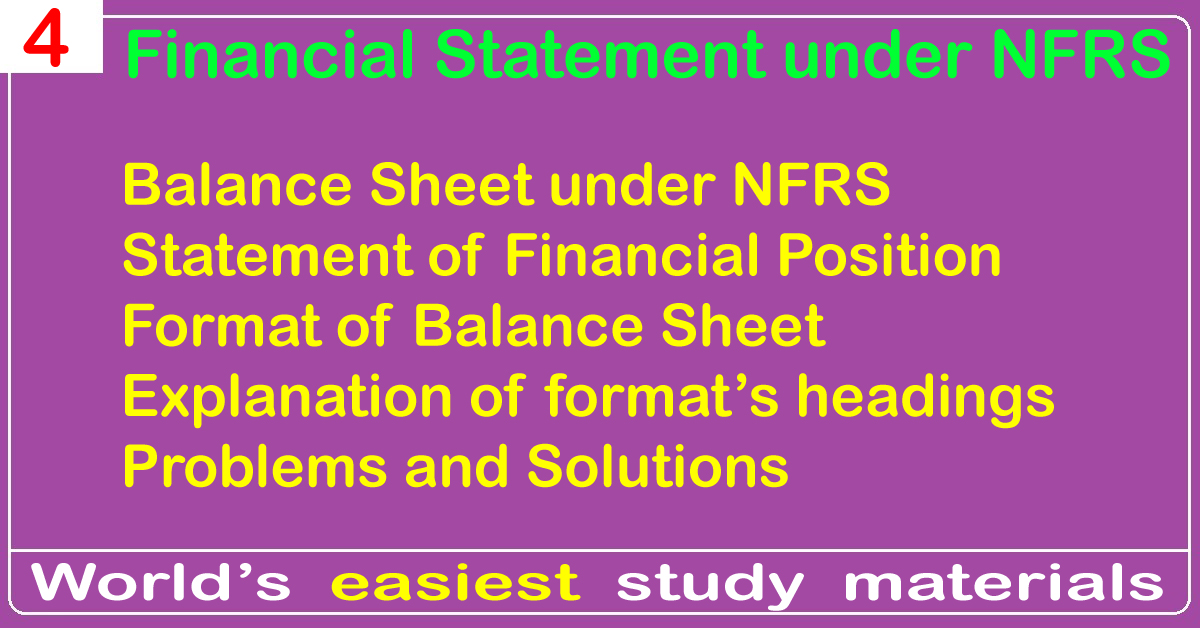
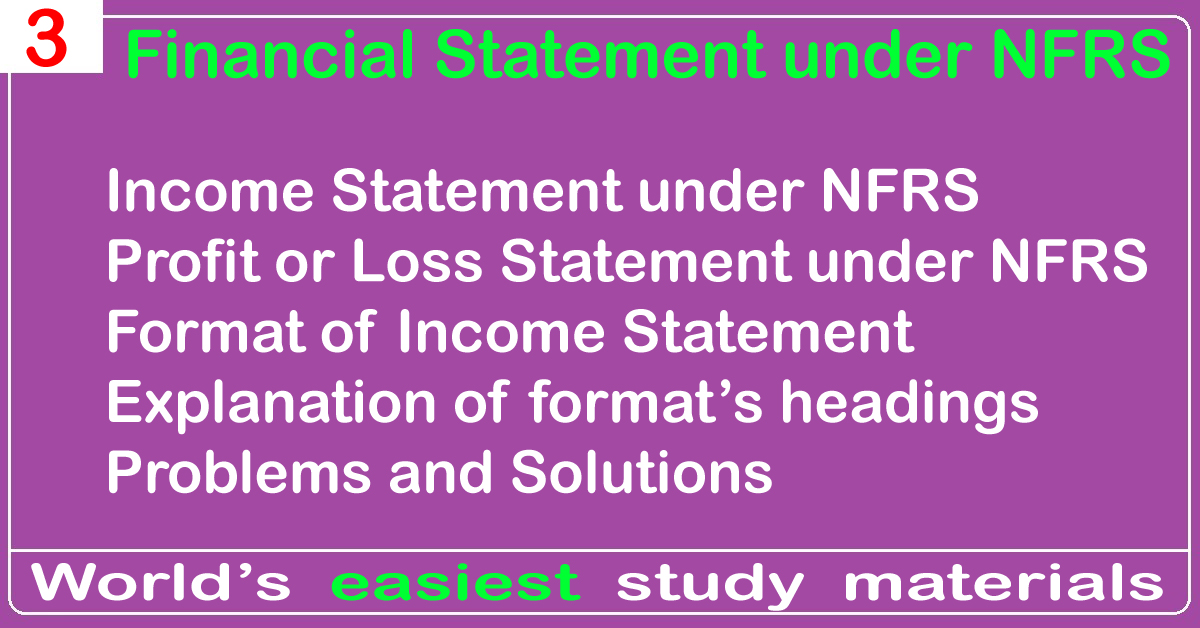
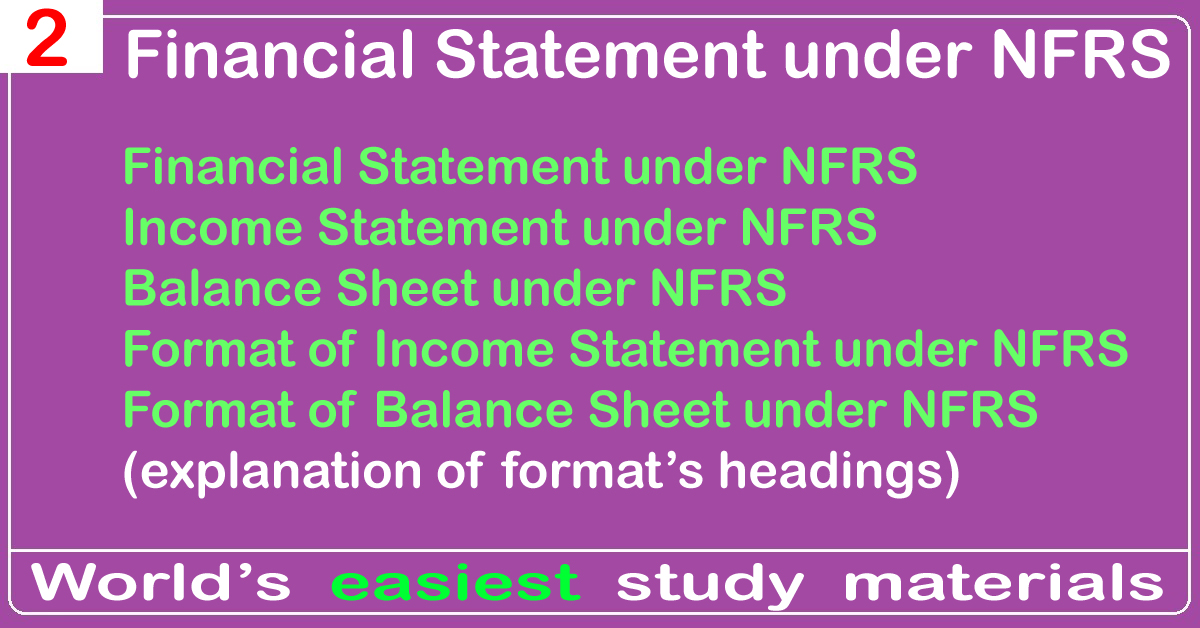
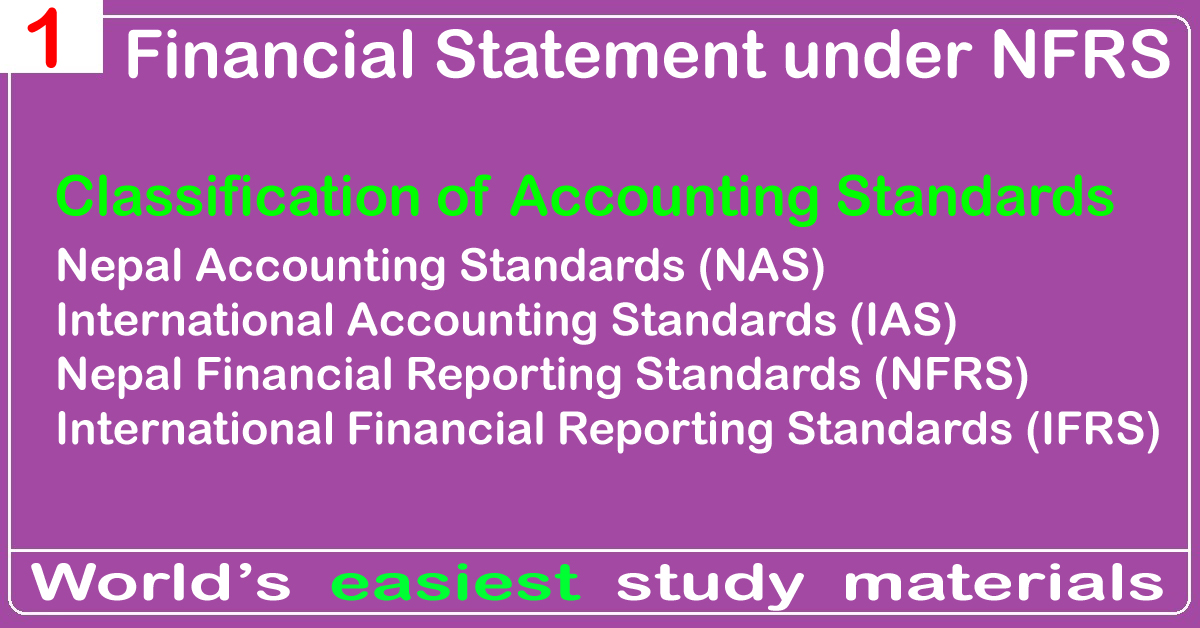



Comment box closed